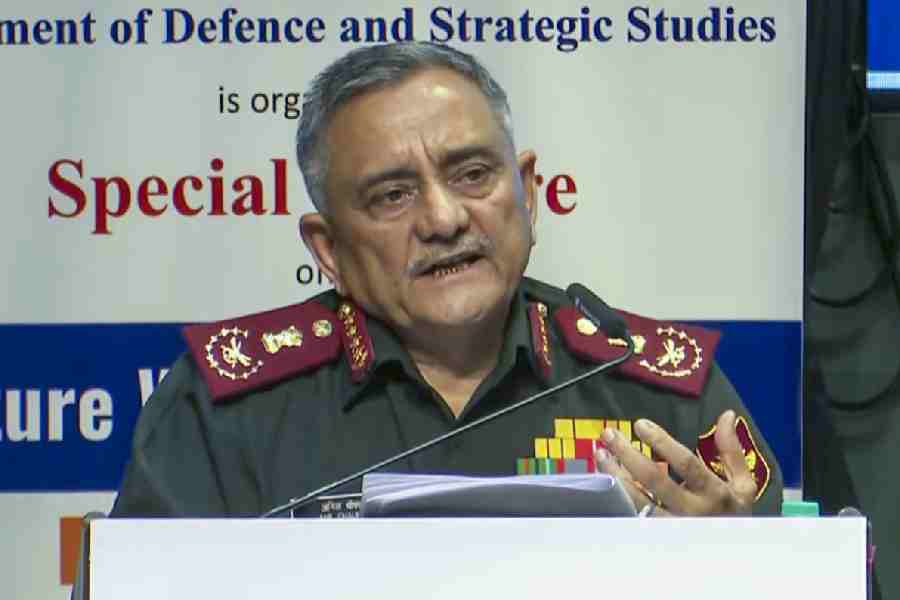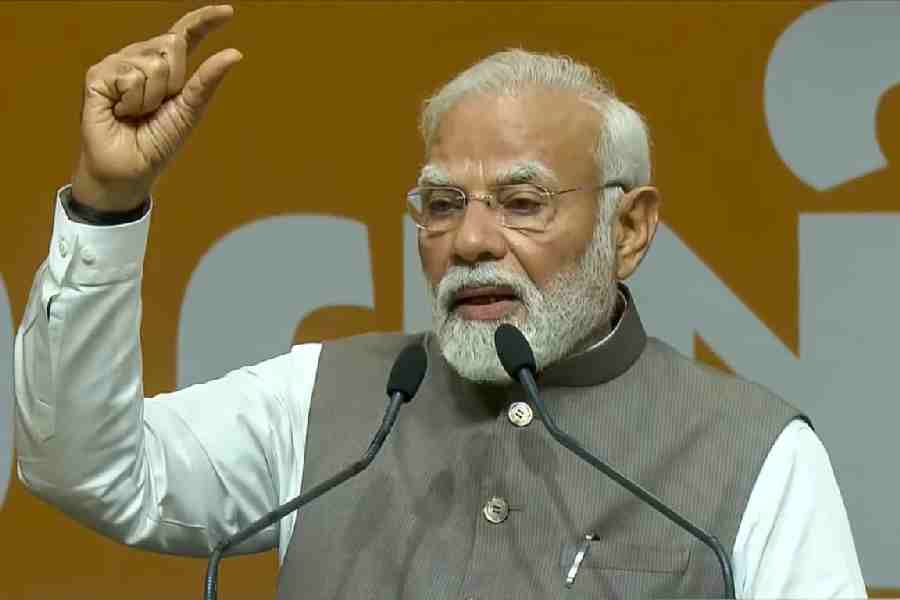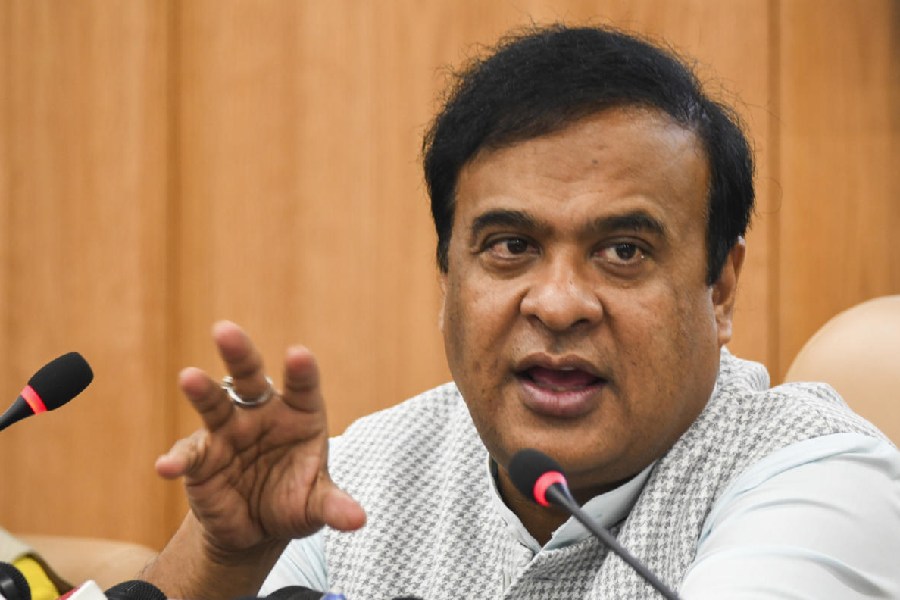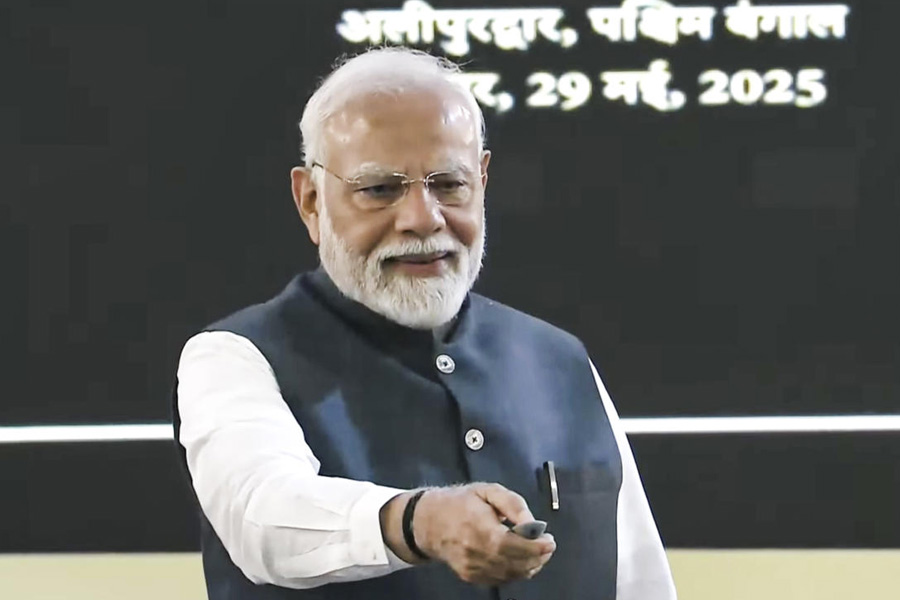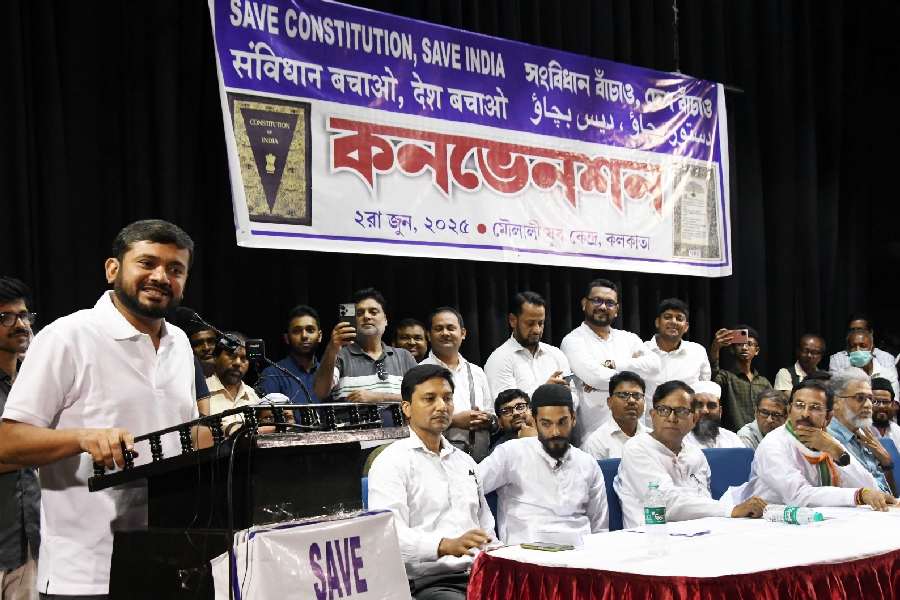 |
| Milan Kumar Das with a bust of his uncle Jatindranath Das. Picture by Sanjoy Chattopadhyaya |
Milan Kumar Das, at 70, has lost hopes of seeing the dream of his life turning into reality. It’s the dream his father Kiron Chandra Das, too, nurtured but failed to realise.
Kiron Chandra was the younger brother of Jatindranath Das, the freedom fighter who died at Lahore jail in 1929 after a 63-day hunger strike to protest the ill-treatment of prisoners by the British.
The Das family wants a portrait of the revolutionary, an active collaborator of Bhagat Singh, to adorn the Central Hall of Parliament. Pleas to political leaders over the decades have met with promises, but no government has yet acted to hang the portrait in the hallowed hall.
“We have lost all hope. We have never sought any favour from the government. We only want that a portrait of our uncle be given a place in the Central Hall,” said Das, who heads the Shahid Jatin Das Smriti Samity.
Those from Bengal whose portraits hang in the hall are Chittaranjan Das, Rabindranath Tagore, Shyama Prasad Mookerjee and Subhas Chandra Bose.
“Jatin Das fasted for 63 days without any medicine or water. His demand was that the freedom fighters in jails be granted the status of political prisoners and treated accordingly,” said Arya Mitra, a history teacher and rector of Nava Nalanda High School.
The Das family’s effort to get a portrait of Jatin Das hung in Parliament started in 1948, when Jawaharlal Nehru visited their home in south Calcutta to meet Bankim Behari, the ailing father of the martyr.
“My grandfather requested Nehruji to put up a portrait of my uncle in Parliament,” said Milan Kumar.
Later, Kiron Chandra took up the matter several times with various Prime Ministers and Presidents, including Indira Gandhi, Rajiv Gandhi and Zail Singh. “Everyone promised to do the needful. But nothing happened,” said Milan Kumar. “The state government’s role hasn’t been encouraging, either. It has not taken up the matter with the Centre.”
“All that our uncle has got is a Metro Railway station named after him. The younger generation should know more about his sacrifices and that of others of his generation,” he added.


